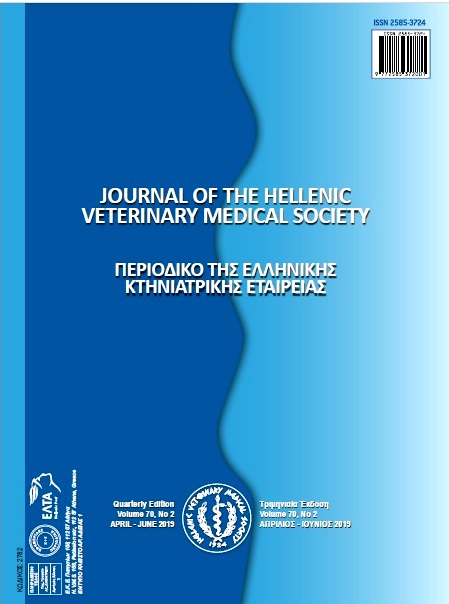Evaluation of Abnormal Limb Conformation in Jumping Thoroughbred Horses

Abstract
Subjective, objective and photographic image using software Auto CAD programme were used for evaluation of limb conformation in 51 jumping thoroughbred horses. The abnormal limb conformations were included: standing under in front (58%), steep shoulder (55%), carpus valgus (45%), calf knee (31%), standing under behind (31%), short pelvis (31%) and straight hocks (16%). Linear and angular limb measurements showed standing under in front had increased elbow joint lateral angle, and decreased fore fetlock joint lateral angle. Steep shoulder displayed a significant increase (P< 0.05) in shoulder joint lateral angle and significant decrease in forearm front length. calf knee horses had significant decrease in the lateral angle of carpus joint. Short pelvis had a significant decrease in lateral length of pelvis and significant increase in croup angle and stifle joint lateral angle. Straight hocks showed the lateral length of both pelvis and gaskin showed a significant decrease and significant increase in the stifle joint lateral angle. Therefore, the current use of linear and angular measurements in relationships to abnormal limb conformation in the present study will allow for estimation of the future performance and soundness in jumping thoroughbred horses. In addition can be considered for selection athletic horse with less risk of lameness.
Article Details
- How to Cite
-
MOSTAFA, M. B., SENNA, N. A., ABU-SEIDA, A. M., & ELEMMAWY, Y. M. (2019). Evaluation of Abnormal Limb Conformation in Jumping Thoroughbred Horses. Journal of the Hellenic Veterinary Medical Society, 70(2), 1533–1540. https://doi.org/10.12681/jhvms.20859
- Issue
- Vol. 70 No. 2 (2019)
- Section
- Research Articles

This work is licensed under a Creative Commons Attribution-NonCommercial 4.0 International License.
Authors who publish with this journal agree to the following terms:
· Authors retain copyright and grant the journal right of first publication with the work simultaneously licensed under a Creative Commons Attribution Non-Commercial License that allows others to share the work with an acknowledgement of the work's authorship and initial publication in this journal.
· Authors are able to enter into separate, additional contractual arrangements for the non-exclusive distribution of the journal's published version of the work (e.g. post it to an institutional repository or publish it in a book), with an acknowledgement of its initial publication in this journal.
· Authors are permitted and encouraged to post their work online (preferably in institutional repositories or on their website) prior to and during the submission process, as it can lead to productive exchanges, as well as earlier and greater citation of published work.


